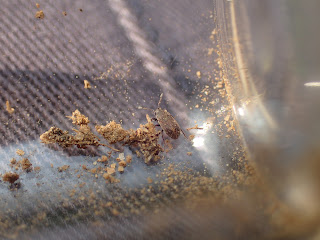Late April 2023
Near the end of the month someone found a Firebug in Rosary Cemetery. There are few records of this attractive red-and-black bug in Norfolk, although they are spreading northwards (and be aware there is another red-and-black bug that is common in Norfolk, Corizus hysoscyami). On my first visit to the cemetery I didn't see any Firebugs, but did find a Bordered Shieldbug, which was a decent sighting. Soon after both Vanna Bartlett and Chris Lansdell had seen large numbers of Firebugs, suggesting that there was a breeding colony. I returned for a quick visit and this time soon found them. The foodplants are Lime trees (Tilia) and Mallow (Malva), both of which are plentiful around Norwich, so it is likely we will be seeing more Firebugs soon.













